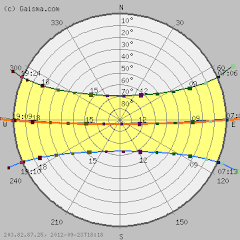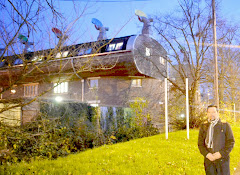SYNOPSIS:
The course gives emphasis on human comfort and energy saving concept and criteria in architecture and building design. The scope of the architecture solutions may be passive or mechanical that illustrates climatic understanding and the use of appropriate technological solutions in architecture design with particular emphasis on tropical climate.
OBJECTIVES:
• To review the influence of climate on architecture on both human comfort and environmental consideration
• To explore passive and mechanical solutions for comfort and energy conservation
• To provide platform for innovative ideas on climatic architecture, Renewable Energy and Energy Efficiency technology in building design application.
LEARNING OUTCOMES:
(from student’s perspective)
• Able to outline environmental issues in relation to energy consumption in built environment and modern lifestyle.
• Able to outline basic design principles contributing to human comfort and energy conservation.
• Able to anticipate as a designer the aspect of human comfort and energy implication in relation to the specific architectural solution.
• Able to apply climatic responsive design in related design project.
• Able to work in team, communicate effectively in written and verbal forms.
WEEK ACTIVITIES
1 Introduction of the course & Introduction to the Environmental Architecture, Building Climatology and Climatic Architecture Technology
2 Lec : Energy for development (Note: I will be attending FAB Strategic Planning Workshop in Melaka ... class will be replaced on other time).
3 Lec : Energy Consumption and environmental issues.
4 Lec : Green Building – Background, Concept & initiatives
Energy Conservation : Renewable Energy and Energy Efficiency concept and initiatives. Briefing on Assignment 1 & 2"
5 Lec : Understanding Thermal Comfort Criteria and Design Response to climate condition.
6 Principles of Sustainable Architectural Design and Practice : Case Study Presentation 1
7 Test 1. Presentation of Assignment 1
8 Passive and Active Cooling Technology. Solar Control and Daylighting Technology. Presentation of Assignment 1 & Asignment 2
9 Semester Break
10 Lec Input Renewable Energy Technology for building.- PV System, BIPV, Solar Heating etc Presentation of Assignment 1
11 Energy Efficiency Technologies - EE lighting, EE cooling, EE office equipment, etc. & Asignment 3
12 Lec Input Integrated Energy Building Design, Energy Management System & Intelligent building.
13 Lecture Integrated Energy Building Design, Energy Management System & Intelligent building. & Test
14 Energy Audit in building, EE Building & Building Maintenance. & Group Work Assignment 3
15 Case Study Presentation Assigmnet 3
UTM Eco-Home - Will be up soon
9 years ago




